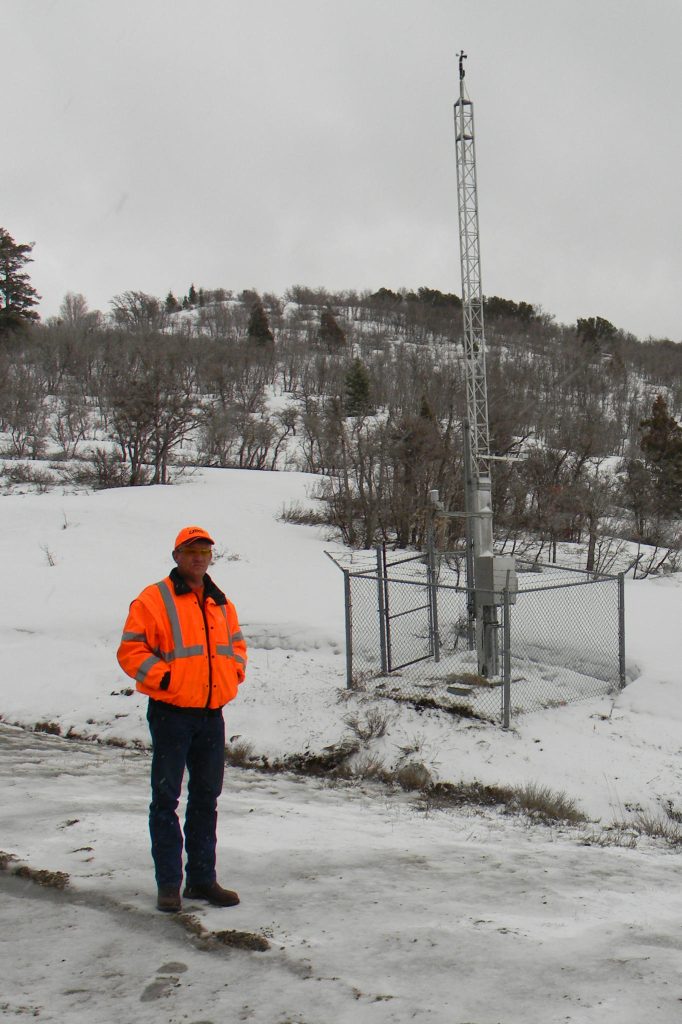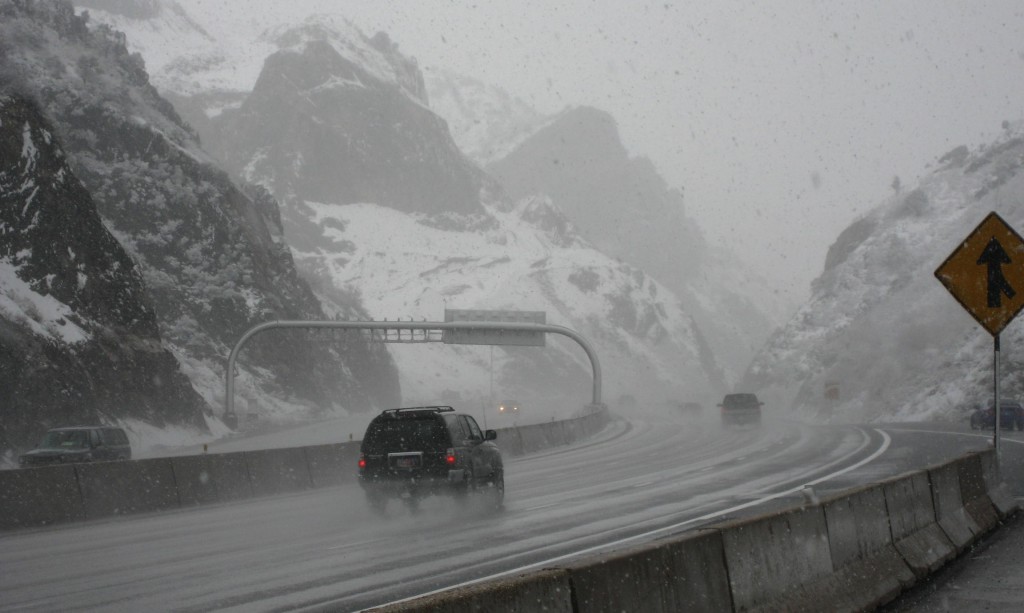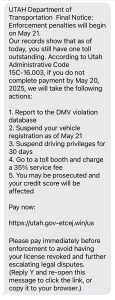Forecasting for Smarties
April 26, 2011
Area specific, accurate and timely weather forecasts make UDOT more efficient thanks to the weather team forecasters and Road Weather Information Stations.

For the average weather watcher, TV or internet news does a good job – knowing the expected temperature or probability of rain or snow means leaving earlier for work, wearing a jacket or taking an umbrella. UDOT Maintenance crews need more detailed information, such as road temperature, air temperature, and the exact hour a storm will hit a specific area of the state. That detailed information helps workers make better use of equipment, manpower and chemicals (including salt water, other anti-ice compounds and buffering agents that minimize corrosion) that prevent ice formation on roads.
RWIS provides that information to weather UDOT forecasters who email information to maintenance crews. “We totally rely on weather reports to do our job, that’s for sure,” says Roger Frantz, Parley’s Canyon Maintenance Station Supervisor for UDOT. Knowing the weather is the first step in scheduling shifts during winter months, spring storms and also during summer. “The weather people understand the elevations and where our station boundaries are located,” and that specific knowledge is paramount to Frantz and his crew who plow and maintain roads from 700 East through Parley’s Canyon, and from the U of U campus to 3300 South. Crews work round-the-clock shifts during winter to keep roads open and extended hours as needed during the rest of the year.
Time and temperature
RWIS stations spread around the state record air temperature, road temperature, solar radiation, humidity and some detect chemicals on the road. Some RWIS stations have remote controlled cameras to view the surrounding areas. If needed, mobile stations can be placed at a location near a maintenance or construction project.
“The further out the forecast and the more accurate that forecast is, the better I can plan,” says Frantz. Knowing that a storm is coming a week in advance helps managers schedule time so a minimum amount of overtime is used.
During a storm, knowing the air and road temperature determines how much chemical is needed. Chemicals can bring the freezing point down to 6 degrees below zero, but Frantz aims at using just enough chemical to keep the precipitation from freezing. And, if the road temperature is warm enough, chemicals may not need to be used at all – Frantz estimates that his crew now uses one-third to one-half of what was used before detailed weather information was available.

Using too much chemical can be bad because of the endothermic reaction, explains Frantz. Salt reacts with the energy in the road to prevent ice from forming. Too much chemical can drop the temperature of the road so “you’re better off to use the bare minimum…you just want to keep the road from freezing.”
Area specific
Knowing where and when a storm will arrives helps Frantz get work done ahead of time. If valley locations stay snow-free during a storm, he may be able to borrow equipment to get more work done in a limited window of time. During summer months “we’re working and they’re watching the weather,” so crews can finish paving or doing other work before a summer storm arrives. Frantz remembers a paving project at the U of U two years ago –“we finished paving at 1:00 and it rained at two.”
Frantz also likes to check the history of a specific location to compare how crews handled a weather event. Reports from plow operators record conditions, temperature and how much chemical was used. Knowing that history means “we can tweak our program” to save time and money, says Frantz.
For more information:
Motorists can make use of weather information from the RWIS system on the UDOT Traffic Website. RWIS stations are indicated on a map – click on the “Road Weather” tab at the top. Move the cursor over each station to see specific information.
Tags: road weather


